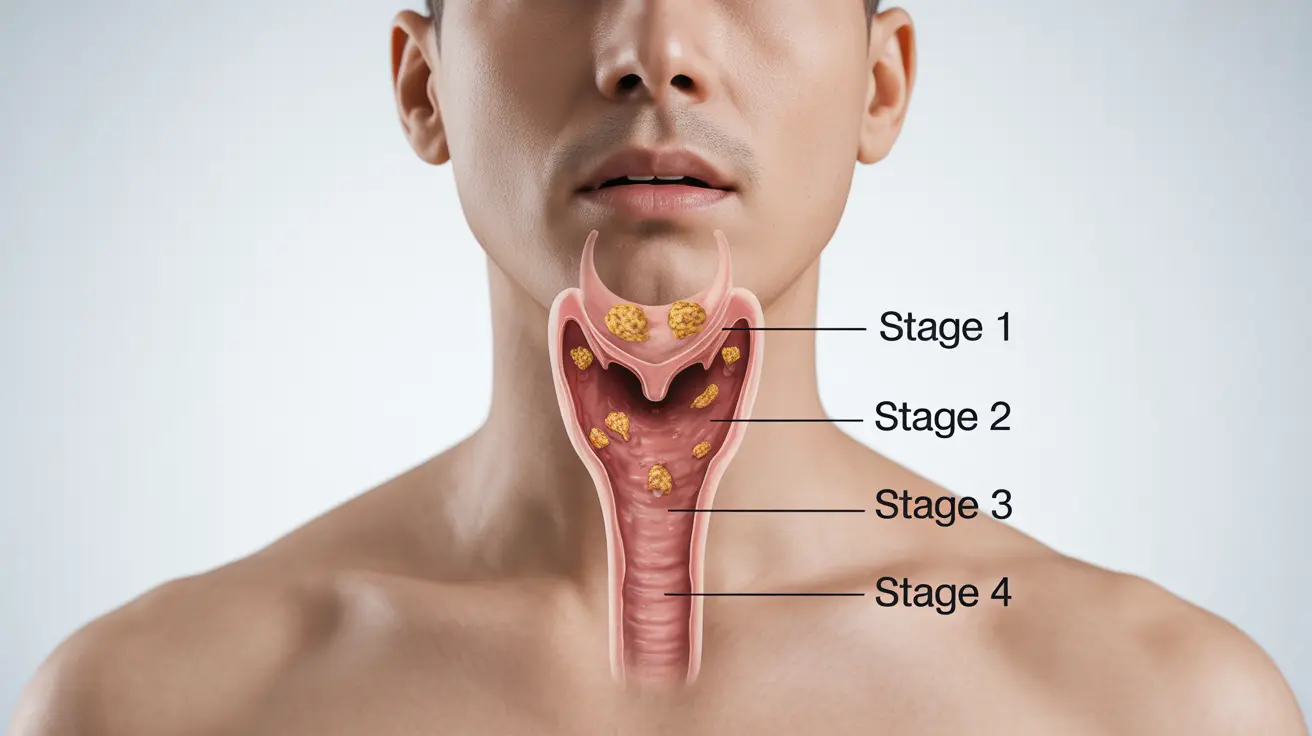Receiving a throat cancer diagnosis can be overwhelming, especially when trying to understand survival statistics and what they mean for individual circumstances. The throat cancer survival rate varies significantly depending on several factors, including the stage at diagnosis, the specific type and location of the cancer, and individual patient characteristics.
While statistics provide general guidance, it's important to remember that each person's journey with throat cancer is unique. Modern treatment advances continue to improve outcomes, and many factors beyond stage classification influence prognosis and quality of life for those facing this diagnosis.
Understanding Throat Cancer Staging and Survival Statistics
Throat cancer survival rates are typically measured using five-year survival statistics, which indicate the percentage of people who remain alive five years after their initial diagnosis. These numbers help medical professionals and patients understand general prognosis trends, though individual outcomes can vary considerably.
For stage 4 throat cancer, which represents the most advanced form of the disease, the five-year survival rate ranges from approximately 25% to 35%, depending on various factors. This stage indicates that cancer has either grown extensively in the throat area or has spread to nearby lymph nodes and potentially distant organs.
Earlier stages show significantly higher survival rates. Stage 1 throat cancer typically has five-year survival rates exceeding 80%, while stages 2 and 3 show progressively declining but still substantial survival percentages. The dramatic difference between early and advanced stages underscores the importance of prompt diagnosis and treatment.
Factors That Influence Individual Prognosis
Several key factors significantly impact throat cancer survival rate beyond the basic staging system. Understanding these variables helps provide a more complete picture of individual prognosis and treatment planning.
Location and Type of Cancer
The specific location within the throat affects survival outcomes. Cancers affecting the vocal cords often have better prognosis than those in other throat areas, partly because they tend to cause symptoms earlier, leading to earlier detection. Additionally, cancers caused by human papillomavirus (HPV) typically respond better to treatment than those caused by tobacco and alcohol use.
Patient Age and Overall Health
Younger patients and those with fewer underlying health conditions generally experience better outcomes. A strong immune system and good overall physical condition help patients tolerate aggressive treatments and recover more effectively from surgical procedures.
Tumor Characteristics
The cancer's growth rate, size, and how it responds to initial treatment all influence long-term survival. Tumors that shrink significantly with initial chemotherapy or radiation often indicate better overall prognosis.
Comprehensive Treatment Approaches for Advanced Throat Cancer
Stage 4 throat cancer treatment typically involves a multidisciplinary approach combining several therapeutic strategies. Treatment plans are highly individualized based on cancer characteristics, patient health status, and treatment goals.
Surgical Options
Surgery may involve removing part or all of the voice box, surrounding tissues, or affected lymph nodes. Advanced surgical techniques, including minimally invasive procedures and reconstructive surgery, help preserve function while effectively treating the cancer. Some patients may require temporary or permanent breathing tubes depending on the extent of surgery required.
Radiation and Chemotherapy
Radiation therapy uses high-energy beams to destroy cancer cells and is often combined with chemotherapy to enhance effectiveness. This combination approach, called chemoradiation, can be used before surgery to shrink tumors or after surgery to eliminate remaining cancer cells. Newer radiation techniques allow for more precise targeting, reducing damage to healthy tissues.
Targeted Therapy and Immunotherapy
Modern cancer treatments include targeted therapies that attack specific cancer cell characteristics and immunotherapy drugs that help the body's immune system fight cancer more effectively. These treatments may be options for patients with specific tumor types or those who haven't responded to conventional treatments.
The Impact of Lifestyle Changes on Treatment Outcomes
While lifestyle modifications cannot cure advanced throat cancer, they can significantly improve treatment effectiveness and overall quality of life. Making positive changes supports the body during treatment and may influence long-term outcomes.
Smoking Cessation
Quitting smoking is one of the most important steps patients can take. Continued smoking during treatment reduces treatment effectiveness, increases complications, and significantly worsens prognosis. Smoking cessation programs and medications can provide crucial support during this challenging time.
Nutrition and Support
Maintaining proper nutrition becomes especially important during throat cancer treatment, as the disease and treatments can affect swallowing and eating. Working with nutritionists and speech therapists helps patients maintain strength and manage treatment side effects.
Prevention and Risk Reduction Strategies
While prevention doesn't directly affect survival rates for those already diagnosed, understanding risk factors helps with family planning and community health awareness. HPV vaccination has emerged as a powerful prevention tool, significantly reducing the risk of HPV-related throat cancers in younger populations.
Regular dental checkups and oral health maintenance also play important roles in early detection and prevention, as dental professionals are often the first to notice suspicious changes in the mouth and throat area.
Frequently Asked Questions
What is the five-year survival rate for stage 4 throat cancer?
The five-year survival rate for stage 4 throat cancer typically ranges from 25% to 35%. However, this statistic represents averages across diverse patient populations and doesn't predict individual outcomes. Factors such as HPV status, overall health, age, and response to treatment can significantly influence personal prognosis.
How does the spread of throat cancer affect survival rates at different stages?
Throat cancer survival rates decrease substantially as the stage increases. Stage 1 cancers confined to their original location have five-year survival rates exceeding 80%. Stage 2 and 3 cancers show progressively lower rates as they grow larger or spread to nearby lymph nodes. Stage 4 represents either very large local tumors or cancer that has spread to distant organs, resulting in the lowest survival rates.
What factors influence individual prognosis in advanced throat cancer?
Multiple factors influence individual prognosis beyond cancer stage, including the specific location and type of throat cancer, whether it's HPV-related, the patient's age and overall health status, tumor characteristics like size and growth rate, and how well the cancer responds to initial treatment. Lifestyle factors such as smoking status and nutritional health also play important roles.
What treatment options are available for stage 4 throat cancer?
Stage 4 throat cancer treatment typically involves combination approaches including surgery to remove tumors and affected tissues, radiation therapy often combined with chemotherapy, and newer treatments like targeted therapy and immunotherapy. Treatment plans are highly individualized based on cancer location, patient health, and treatment goals, often involving multidisciplinary medical teams.
Can lifestyle changes like quitting smoking or HPV vaccination improve throat cancer outcomes?
Quitting smoking significantly improves treatment outcomes and survival for throat cancer patients, as continued smoking reduces treatment effectiveness and increases complications. While HPV vaccination doesn't help those already diagnosed, it provides powerful prevention for younger individuals who haven't been exposed to cancer-causing HPV strains. Other supportive lifestyle changes like proper nutrition and regular medical follow-up also contribute to better outcomes.




